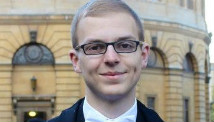The White House said today it has no plans to offer new proposals to avoid the fiscal cliff which looms over the country's economy just five days from now, but will meet Friday with Congressional leaders in a last ditch effort to forge a deal.
Republicans and Democrats made no conciliatory gestures in public today, despite the urgency.
The White House said President Obama would meet Friday with Democratic and Republican leaders. But a spokesman for House Speaker John Boehner said the Republican "will continue to stress that the House has already passed legislation to avert the entire fiscal cliff and now the Senate must act."
The White House announced the meeting after Senate Minority Leader Mitch McConnell, R-Ky., called the budget situation "a mess" and urged the president to present a fresh proposal.
"I told the president I would be happy to look at whatever he proposes, but the truth is we're coming up against a hard deadline here, and as I said, this is a conversation we should have had months ago," McConnell said of his phone call with Obama Wednesday night.
McConnell added, "Republicans aren't about to write a blank check for anything Senate Democrats put forward just because we find ourselves at the edge of the cliff."
"That having been said, we'll see what the president has to propose," the Republican Senate leader said.
But a senior White House official told ABC News, "There is no White House bill."
That statement, however, may have wiggle room. Earlier today White House spokesman Jay Carney said, "I don't have any meetings to announce," but a short time later, Friday's meeting was made public.
It's unclear if the two sides are playing a game of political chicken or whether the administration is braced for the fiscal cliff.
Earlier today, fiscal cliff, Senate Majority Leader Harry Reid lashed out at Republicans in a scathing speech that targeted House Republicans and particularly Boehner.
Charles Dharapak/AP Photo
Gen. Norman Schwarzkopf to Saddam Hussein: 'Get Outta Town' Watch Video
Reid, D-Nev., spoke on the floor of the Senate as the president returned to Washington early from an Hawaiian vacation in what appears to be a dwindling hope for a deal.
The House of Representatives will meet for legislative business Sunday evening, leaving the door cracked open ever so slightly to the possibility of a last-minute agreement.
But on a conference call with Republican House members Thursday afternoon, Boehner kept to the Republican hard line that if the Senate wants a deal it should amend bills already passed by the House.
That was the exact opposite of what Reid said in the morning, that Republicans should accept a bill passed by Democratic led Senate.
Related: What the average American should know about capital gains and the fiscal cliff.
"We are here in Washington working while the members of the House of Representatives are out watching movies and watching their kids play soccer and basketball and doing all kinds of things. They should be here," Reid said. "I can't imagine their consciences."
House Republicans have balked at a White House deal to raise taxes on couples earning more than $250,000 and even rejected Boehner's proposal that would limit the tax increases to people earning more than $1 million.
"It's obvious what's going on," Reid said while referring to Boehner. "He's waiting until Jan. 3 to get reelected to speaker because he has so many people over there that won't follow what he wants. John Boehner seems to care more about keeping his speakership than keeping the nation on a firm financial footing."
Related: Starbucks enters fiscal cliff fray.
Reid said the House is "being operated with a dictatorship of the speaker" and suggested today that the Republicans should agree to accept the original Senate bill pass in July. Reid's comments, however, made it clear he did not expect that to happen.
"It looks like" the nation will go over the fiscal cliff in just five days, he declared.
"It's not too late for the speaker to take up the Senate-passed bill, but that time is even winding down," Reid said. "So I say to the speaker, take the escape hatch that we've left you. Put the economic fate of the nation ahead of your own fate as Speaker of the House."
Boehner's spokesman Michael Steel reacted to Reid's tirade in an email, writing, "Senator Reid should talk less and legislate more. The House has already passed legislation to avoid the entire fiscal cliff. Senate Democrats have not."
Boehner has said it is now up to the Senate to come up with a deal.
Obama, who landed in Washington late this morning, made a round of calls over the last 24 hours to Reid, Boehner, Senate Minority Leader Mitch McConnell, R-Ky., and House Minority Leader Nancy Pelosi, D-Calif.
Related: Obama pushes fiscal cliff resolution.



 iPhone, iPad and Mac are trademarks of Apple Inc., registered in the U.S. and other countries. App Store is a service mark of Apple Inc.
iPhone, iPad and Mac are trademarks of Apple Inc., registered in the U.S. and other countries. App Store is a service mark of Apple Inc.











